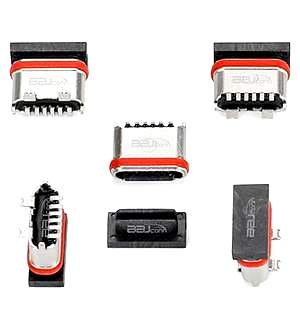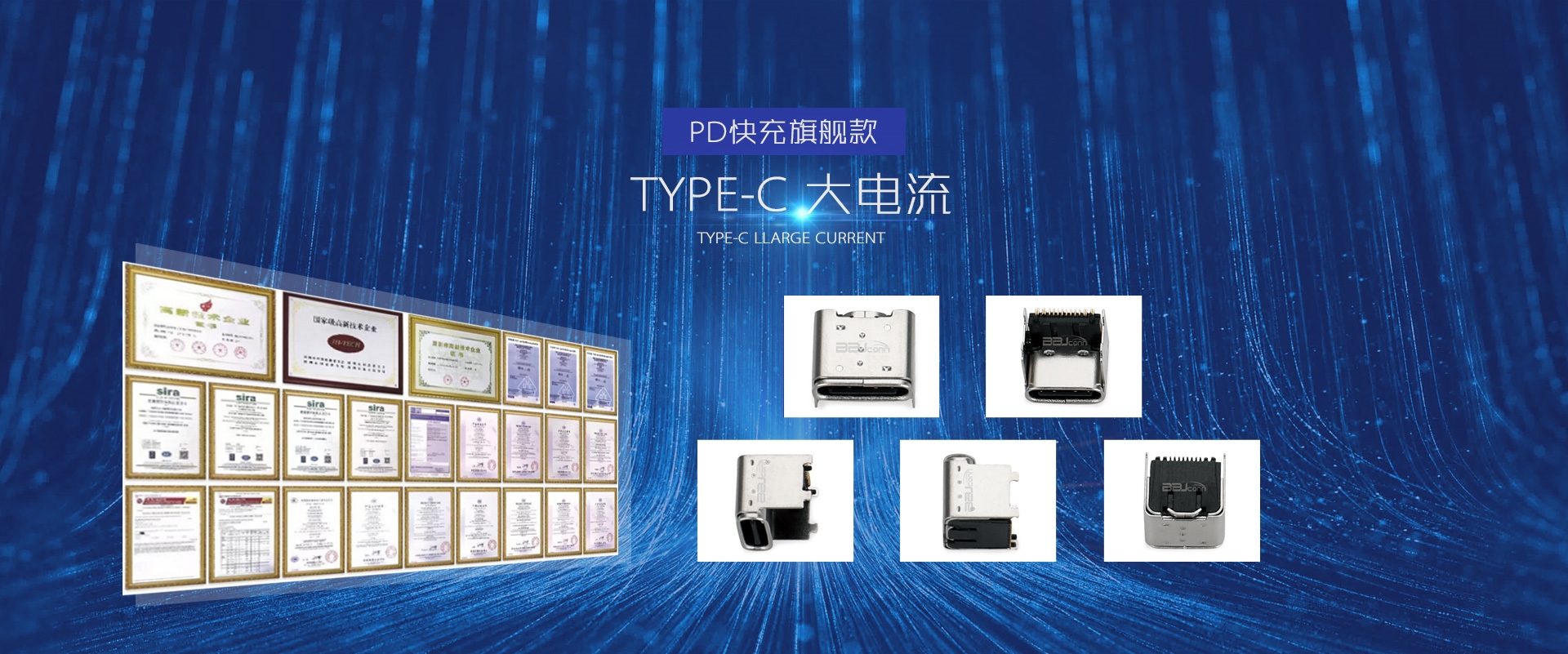Type-C connector injection molding production process analysis
Type-C connectorAs the current mainstream interface type, it is widely used in mobile phones, laptops, smart hardware and other equipment because of its high transmission speed, reversible plug design and higher power carrying capacity. During the production process, the Type-C connector The injection molding process is crucial. This article will provide an in-depth analysis of the Type-C connector injection molding production process and discuss its key steps and quality control points in manufacturing.
Type-C connector design stage
The design of Type-C connector is the first step in injection molding production. The core goal of this stage is to ensure that the size, function and material selection of the product meet high standard technical requirements. The design of Type-C connector usually consists of 2 parts: Plastic Shell and internal metal structure. The plastic shell must not only meet the requirements of compression resistance, tensile resistance and corrosion resistance, but also must ensure precise dimensions so that precision metal pins can be perfectly embedded.
The design of Type-C connectors needs to take into account the fluidity, shrinkage and mold manufacturability of injection molding. Designers need to work closely with mold engineers to optimize the injection molding process and ensure that the performance and appearance of the connector meet the expected goals. The success of this stage laid a solid foundation for subsequent production.

Type-C connector mold design and production
The injection molding production of Type-C connectors is inseparable from the support of molds. Mold design is one of the key links in the entire production process. The mold designer designs a set of Type-C connectors based on the shape, size requirements and injection molding process. High-precision mold. The mold usually consists of multiple parts, including the feed inlet, cooling system, exhaust system and demoulding mechanism, etc. These are necessary conditions to ensure the smooth progress of the injection molding process.
The production process of Type-C connector mold requires strict tolerance control and material selection. High-hardness, high-wear-resistant steel is usually used to make the mold to ensure the durability and long-term stability of the mold. Precision molds can not only ensure the product The dimensional accuracy can also reduce defects in the production process and improve production efficiency.
Type-C connector injection molding
The injection molding process of Type-C connector is the core of the entire production process. In this process, the plastic raw materials are melted by the injection molding machine and injected into the mold. After cooling, the required plastic shell is formed. According to the complexity of the Type-C connector Injection molding machines usually use high-precision control systems to ensure the consistency of each batch of products.
In the injection molding process, it is crucial to control the temperature, pressure and time. The temperature of the injection molding machine must be accurately controlled to ensure that the plastic has moderate fluidity when injected into the mold and can evenly fill all parts of the mold. At the same time, the cooling system needs Work efficiently to ensure that the temperature in the mold is quickly reduced to avoid problems such as warping or deformation. At this time, the plastic shell of the Type-C connector has been formed, providing a basis for subsequent assembly and inspection.
Type-C connector post-processing and assembly
After injection molding of Type-C connectors, post-processing operations are usually required, including burr removal, trimming and surface treatment. Deburring is the removal of excess plastic produced during the injection molding process manually or mechanically to ensure a clean appearance of the connector. The trimming step ensures that the interface accuracy of each connector meets the requirements, especially the fit between the metal pins and the plastic shell.
In addition, the Type-C connector also requires the installation of internal metal pins. These metal pins are embedded in the plastic shell through a precise assembly process to ensure good electrical contact performance and stable signal transmission. During the assembly process, attention should also be paid to preventing metal pins damage, and ensure it is securely installed.
Type-C connector quality inspection and testing
Quality inspection of Type-C connectors is the last level to ensure product qualification. Quality inspection is usually divided into two categories: appearance inspection and functional testing. Appearance inspection mainly checks whether the shape of the connector meets the standards and whether there are burrs, scratches or Other visible defects. Functional testing includes electrical performance testing, mechanical durability testing, etc. to ensure that each Type-C connector can transmit data and power normally.
In electrical performance testing, common test items include impedance testing, signal transmission testing and voltage testing, etc., aiming to ensure that the Type-C connector has efficient transmission capabilities and stability. Durability testing simulates long-term use. The number of plugging and unplugging and load-bearing capacity of the connector.
Challenges and Innovations in Type-C Connector Injection Molding Production
Although the injection molding production process of Type-C connectors is relatively mature, with the continuous development of technology, there are still some challenges in the production process. For example, the miniaturization of connector sizes requires more sophisticated production processes, the design and processing of molds Accuracy requirements have also increased. In addition, in order to adapt to emerging applications such as 5G and fast charging, the materials and designs of Type-C connectors are also constantly innovating.
In terms of innovation, some manufacturers have begun to use new plastic materials, such as plastics with better high temperature resistance and corrosion resistance, to improve the overall performance of the connector. At the same time, the level of automation in the injection molding production process is also constantly improving, and manual operations reduction, production efficiency and quality have been further improved.
In short, the injection molding production process of Type-C connectors involves multiple links, from design, mold making, injection molding, post-processing to final quality inspection, each link is crucial. With the continuous advancement of technology, the production process We are also constantly optimizing, and future Type-C connector production will be more efficient, precise, and adaptable to a wider range of application needs.
